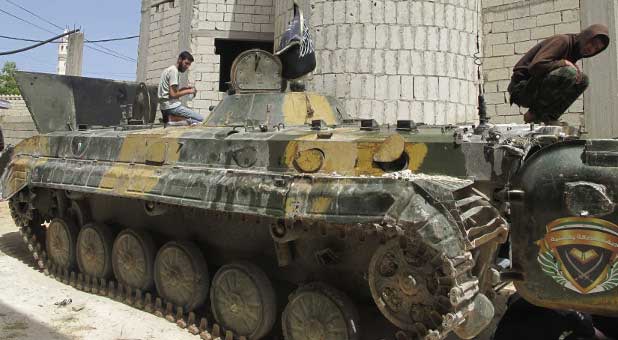Several years ago, when I mapped out the plot for my novel Damascus Countdown, I tried to imagine a scenario in which Iran and its agents would attempt to take over Syria, attempt to make it a fully-owned and operated province of the Islamic Revolution, and then try to use Syrian territory to launch a “War of Annihilation” against Israel.
What once seemed fictional premise now seems increasingly plausible.
The chaos, carnage and bloodshed in Syria continues unabated. Chemical weapons have been used in limited amounts but with tragic effect. But as bad as it has been so far, I don’t think we’ve seen the worst yet. As I have stated on this blog for months, the countdown to something worse appears to have started.
A growing number of analysts agree that Syria is imploding. Now, some very hard questions need to be asked:
- How much longer can Assad and his regime hold on?
- Will Syria completely collapse?
- Can Syria ever really be put back together?
- If they can’t help Assad survive and defeat the rebels, will Iran and Hezbollah move to take over Syria, or can Syria remain an independent sovereign country?
- If Syria comes fully under its control, might Iran use Syrian territory to launch an apocalyptic attack on Israel?
- Is it possible that in our lifetime, we could actually see the end of the geopolitical entity known as the “Syrian Arab Republic”?
- Is it possible that we will see the tragic utter destruction of Damascus as a city in our lifetime, in fulfillment of Bible prophecy?
- What should the nations of the world be doing to help the people of Syria and help make peace?
- What should the church be doing to help those who are suffering, to care for our persecuted brothers and sisters, and to bring the good news to those in great darkness?
This column is not about offering answers to these questions today. Rather, my hope is simply to begin raising the right questions and to draw your attention to the latest geopolitical assessments.
One thing is clear: The trend lines are ominous.
“After more than two years of conflict, Syria is breaking up,” reports the New York Times. “A constellation of armed groups battling to advance their own agendas are effectively creating the outlines of separate armed fiefs. As the war expands in scope and brutality, its biggest casualty appears to be the integrity of the Syrian state.
“The black flag of jihad flies over much of northern Syria. In the center of the country, pro-government militias and Hezbollah fighters battle those who threaten their communities. In the northeast, the Kurds have effectively carved out an autonomous zone. … As evidence of massacres and chemical weapons mounts, experts and Syrians themselves say the American focus on change at the top ignores the deep fractures the war has caused in Syrian society. Increasingly, it appears Syria is so badly shattered that no single authority is likely to be able to pull it back together any time soon. Instead, three Syrias are emerging: one loyal to the government, to Iran and to Hezbollah; one dominated by Kurds with links to Kurdish separatists in Turkey and Iraq; and one with a Sunni majority that is heavily influenced by Islamists and jihadis.”
“It is not that Syria is melting down—it has melted down,” says Andrew J. Tabler, a senior fellow at the Washington Institute for Near East Policy and author of In the Lion’s Den: An Eyewitness Account of Washington’s Battle With Syria. “So much has changed between the different parties that I can’t imagine it all going back into one piece.”
Joel C. Rosenberg is the author of numerous New York Times best-selling novels and nonfiction books, with nearly 3 million copies sold. He is also the founder of the Joshua Fund (www.joshuafund.net). His books include The Last Jihad (2002), The Last Days (2003), The Ezekiel Option (2005) and The Copper Scroll (2006).
For the original article, visit joelrosenberg.com.














































